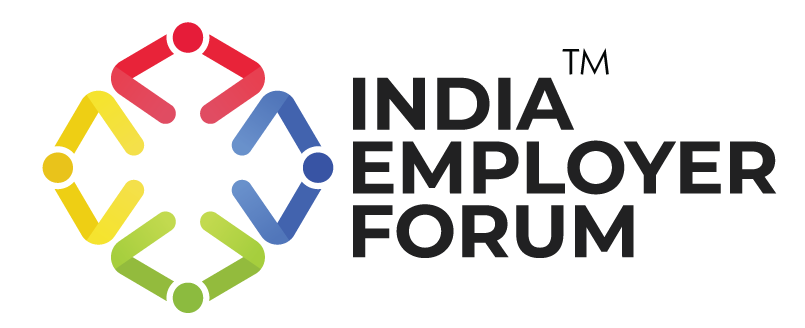Diversity and inclusive leadership have been a long-standing topic in the Indian corporate world. With several countries successfully bridging the gap consciously and unconsciously, Indian corporates are getting there- almost. An emerging market in the global business industries, India welcomed gender inclusion quotes after the 2013 Companies Act made it mandatory for public firms to hire at least one woman director to the board. And by 2017, the quotas witnessed a startling rise to 82.8%, with these publicly listed firms having one or more than one woman as directors. However, inclusive leadership remained a debatable topic even after the triumphant impact of the 2013 Companies Act.
Needless to say, power roles in the business industries predominantly belonged to men for decades until these leaders embraced inclusive leadership to open grounds for new talents irrespective of gender. Although change is inevitable given the shift in generation from baby boomers to millennials, India is already witnessing a rise in women entrepreneurship and women leaders on the business front. The new generation leaders (male or female) want work diversity, a healthy working environment, transparency, purpose-driven goals, and broader perspectives to shape their businesses and objectives. More and more leaders are seeking different perspectives to stay ahead in the competition. They are looking beyond gender and investing resources in talents who will be lucrative for the business in the long run. Hence, giving rise to great and inclusive leaders.
You might also be interested to read: Does Workforce Diversity And Inclusion Influence Organization’s Growth?
Also, with women breaking stereotypes progressively in the business world, they are not holding back when it comes to bringing competency and skills to the table. Moreover, they are making empowering moves by entering male-dominated markets such as tech and engineering with their talents, making the hiring committees ponder. Driven by their expertise, women are standing shoulder-to-shoulder on the business front and giving rise to inclusive leadership. However, the 2019-2020 pandemic uncovered inclusive leadership in a new light when women had to take a back seat on professional fronts to care for their families. Plus, the fall of the economy jolted the women workforce the most as the CMIE estimated that 49% out of total job losses by November 2020 were of women. Nevertheless, men recovered their jobs, women were less fortunate, with a disproportionately high percentage of job loss.
Strong leadership is not an innate trait but developed with the decisions a leader makes. And with the world going diverse and bridging the disparity between genders, caste, creed, and more, it is about time Indian leaders embrace inclusive leadership to build a thriving future for their businesses. Here’s a quick glance about inclusive leadership and how this practice can make men great leaders of tomorrow.
What is inclusive leadership or an inclusive leader?
Inclusive leaders aren’t hesitant to look beyond their biases and broaden their views and perspectives when it comes to decision-making. They advocate the inclusion of gender and diversity in their management and are comfortable seeking broader perspectives or speaking about gender inclusion to their masses. Self-awareness is key when it comes to inclusive leadership followed by allying with the women in the workforce. Only when women feel included, valued, and heard while working in a team led by a male leader will indicate signs of strong leadership.
Here are some guidelines that can strengthen the stance of an inclusive leader:
Identify the biases: It’s crucial for a leader to recognize, understand, and rectify his biases and vulnerabilities that may hinder the decision-making process. An inclusive leader will not be hesitant to invite feedback on his leadership skills. Being a leader is a challenging role, so if the job gets too comfortable, it’s time to ask questions, especially to a more diverse group, to invite broader perspectives that’ll help polish the leadership skills. Connect with women in the workforce and create an environment where they aren’t afraid to point out flaws in leadership or management skills. Women and other diverse groups should feel supported, respected, and included at the workplace to signify great leadership skills.
Being inclusive is personal: Leaders cannot preach an idea with conviction unless they believe in it. A leader must adopt the mindset and inculcate the belief with words and action in day-to-day work life. Speak to the management about gender inclusion and diversity to the masses frequently. Attend events and workshops that promote gender parity and inclusive leadership. Also, train the hiring committees about diversity since they are the eyes and ears of the talent markets. An unbiased hiring system is the first step to being a culturally diverse organization.
Organize open discussions: Broaden the perspective panel at work and invite participation from diverse groups. Give everyone a chance to put forth their views, criticisms, and feedback. Encourage employees to open up about what makes them comfortable and uncomfortable. Speak up against mindsets that support gender inequalities and racism. Propagate transparency in the organization through gender pay, equal opportunities, and leaves to women and other races.
Instill diversity in the hierarchy: An inclusive leader will encourage diversity through the top-down hierarchy. An organization must reflect diversity in the workforce and overall management by choosing inclusive and diverse leaders. To sustain a diverse environment where all cultures and genders are respected, it’s crucial that the management practices diversity and gender inclusion while hiring leaders too. Moreover, leaders should encourage gender inclusion by rewarding employees that support and speak up for gender parity and diversity. They can also practice inclusive behavior with small gestures such as inviting her/him to lunch or crucial meetings at work.
Inclusive leadership marks the onset of a new era as men want to step out of legacy leadership. With the fundamental shift in how 21st-century leaders want to manage the workforce or business goals by advocating diversity and gender inclusion, they no longer want to stick to profit-driven ideals. So, is this the end of authoritarian leadership? Perhaps, yes. New inclusive leaders want to add a purpose to their goals and focus on their people that’ll help them achieve these goals successfully. No matter the gender, caste, creed, and color, these leaders want to capitalize on lucrative talent, add broader perspectives to their objectives and empower with gender parity, thus giving rise to great leaders of tomorrow.
References:
- What Happened When India Mandated Gender Diversity on Boards | Harvard Business Review | Ruth V. Aguilera, Venkat Kuppuswamy, and Rahul Anand | February 05, 2021
- One year since lockdown 1.0: Share in workforce already falling, Covid-19 job losses hit women harder | The Indian Express | Aanchal Magazine, Pranav Mukul, and Anil Sasi | March 25, 2021
- 10 Characteristics of Inclusive Leadership | American Bar Association | Emilie R. Ninan and Virginia G. Essandoh | April 20, 2020
- How Men Can Be More Inclusive Leaders | Harvard Business Review | David G. Smith, W. Brad Johnson, and Lisen Stromberg | May 12, 2021
You might also be interested to read:






